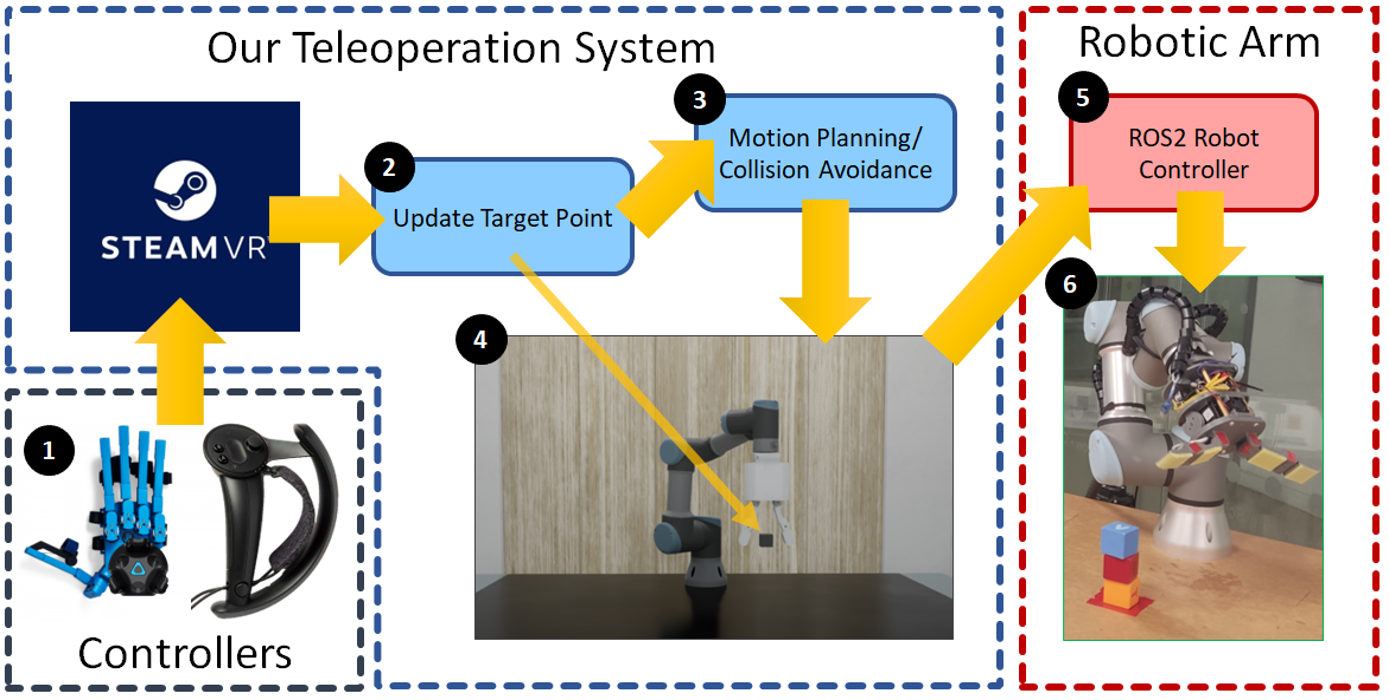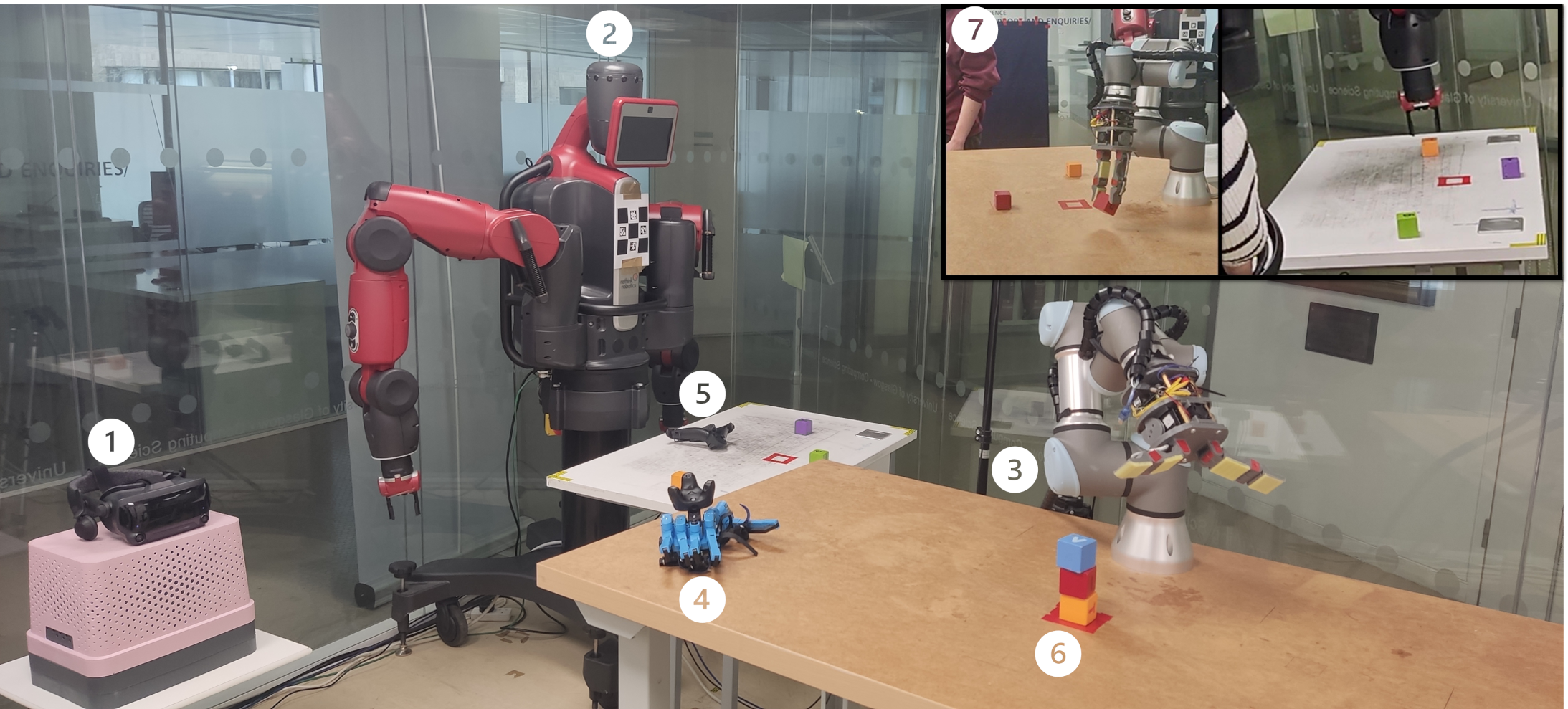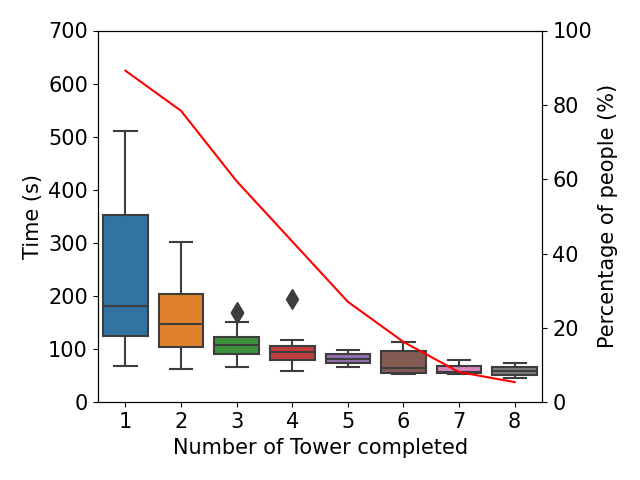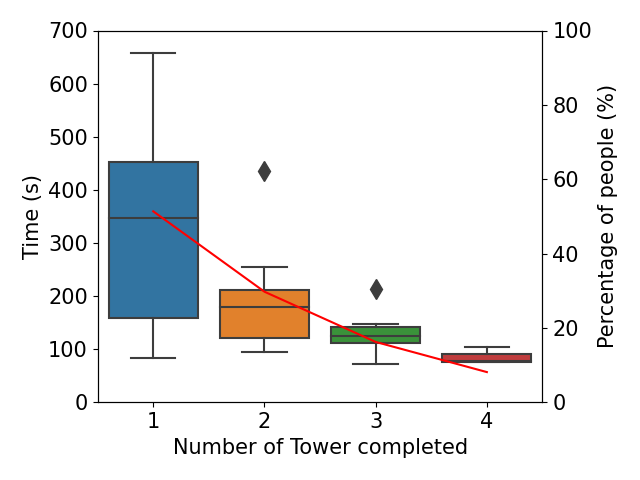Robots are being created each year with the goal of integrating them
into our daily lives. As such, there is an interest in research in
evaluating the trust of humans toward robots. In addition,
teleoperating robotic arms can be challenging for non-experts. To
reduce the strain put on the user, we created TELESIM, a modular and
plug-and-play framework that enables direct teleoperation of any
robotic arm using a digital twin as the interface between users and
the robotic system.
We evaluated our framework using a user survey with three robots and
User Interface Device (UID) and recorded the user's workload and
performance at completing a tower stacking task. However, an
analysis of the strain on the user and their ability to trust robots
was omitted. This paper addresses these omissions by presenting the
additional results of our user survey of 37 participants carried out
in United Kingdom. In addition, we present the results of an
additional user survey, under similar conditions performed in Japan,
with the goal of addressing the limitations of our previous
approach, by interfacing a VR controller with a UR5e, henceforth
referred to as Yellow Design.
Our experimental results show that the Yellow Design has more towers
built. Additionally, the Yellow Design gives the least amount of
cognitive stress, while the combination of Senseglove and UR3
provides the user with the highest physical strain and causes the
user to feel more frustrated. Finally, the Japanese participants
seem more trusting of robots than the British participants.



